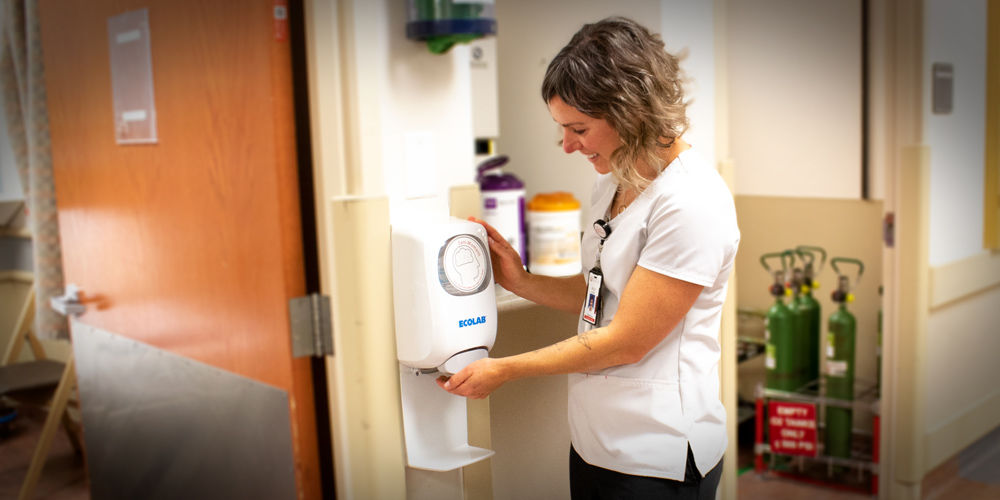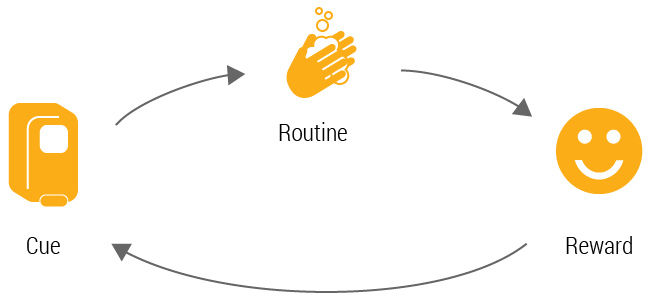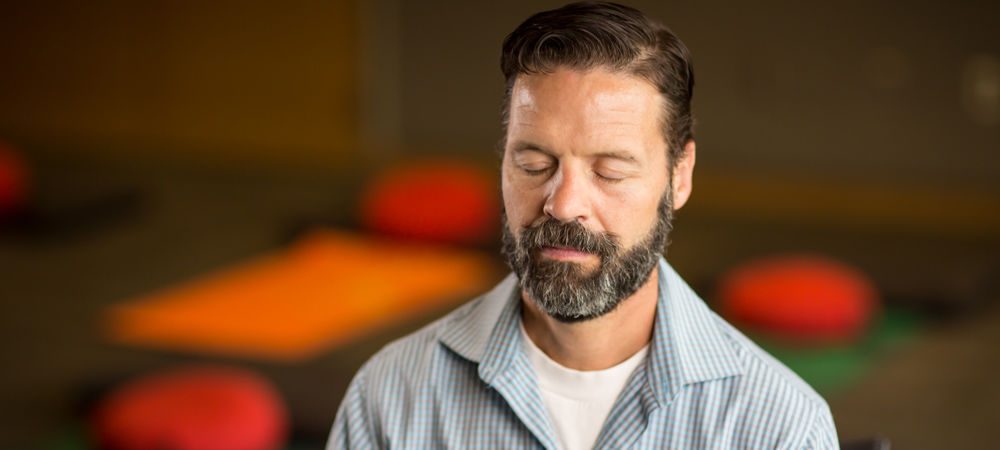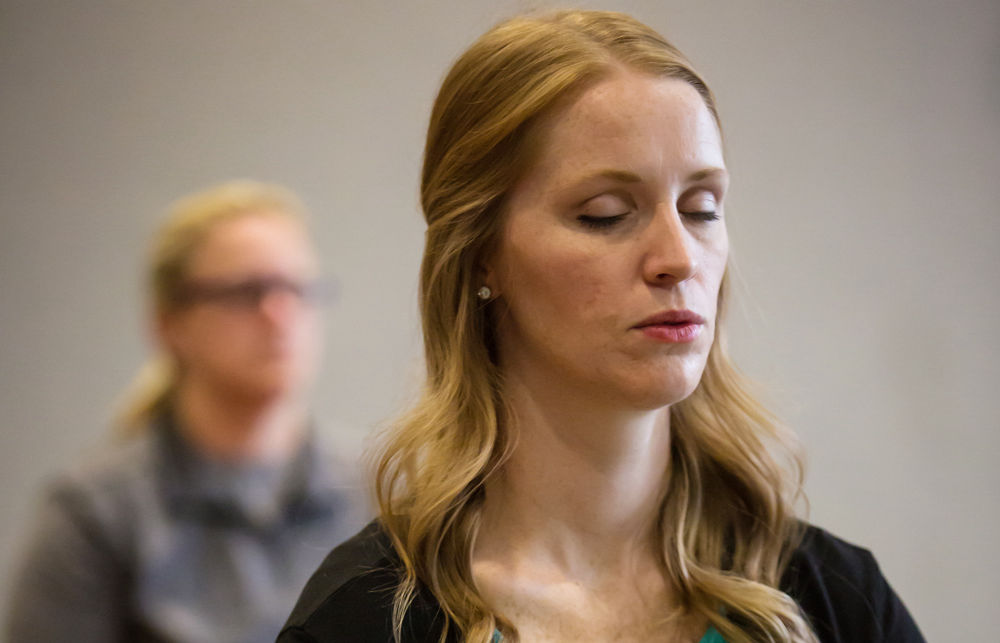Mindfulness in Medicine Toolkit

Click here for a list of resources you and your team can use to practice mindfulness and increase your well-being.
1. Form a mindful habit loop
abits are formed in a simple behavioral loop–cue, routine, reward. Emergency medicine nurse Polly Dacus and health care assistant and transporter Michael Mangum developed a simple routine to help carve out moments of sanity at the bedside called the “sani-moment.”

[Polly Dacus:] Working in the emergency department can be really emotionally draining. It’s important to work on increasing our compassion and checking our emotional fatigue. How we feel–our moods–not only impact us, they impact our patients. We wanted to design something –a simple reminder–that would help people connect with why we all chose to go into health care in the first place.
Our habit is washing our hands with gel san. We wash our hands with gel hand sanitizer like 500 times a day. So we thought, what if we could take that time to focus and be aware of the present? Give your brain a little refresh cycle by focusing on that moment–one task at a time. When you feel the sanitizer, focus on the present moment: cold wet bubbles. Just being present and mindful in that moment.

For me, I feel like the “sani-moment” helps me deliver better care. I can leave all of the other stuff I was doing on the other side of the door. I’m not answering my phone, I’m not thinking of the million other things I need to do. I’m just being still and listening, even if it’s for one minute. The reward is to that I actually feel better when I’m more mindful.
2. Work it into your daily routine

How do the experts practice mindfulness? They build it into their daily routine. We asked associate professor/lecturer of social work and mindfulness instructor Trinh Mai to share how she integrates mindfulness into her daily routine.
[Trinh Mai:] My habit to start my day is waking earlier than the rest of my family and doing a formal meditation practice after I roll out of bed, when my house and my mind are still relatively quiet. Starting the day by connecting with awareness sets me up to carry that awareness with me throughout the day.
During the workday, once I start working, I tend to want to move quickly from one task to the next. I have had to work hard at developing a new habit of taking breaks, stretching, looking outside the window. I find the STOP practice helpful for pausing, checking in with myself, gathering data on how I am doing and transitioning from one activity to the next with insight and intention. In addition, my body tends to feel more relaxed and my mind clearer and less reactive after a STOP practice.
In meetings and in classes, I also like to invite people to join me in short practices of STOP, Awareness of Breath, and Body Scan to improve presence, focus and to support thoughtful discussions. It is helpful to offer options to those that would rather not participate, such as using this time for a moment of silence or prayer.
My habit at the end of the day is to make time for a formal practice. It helps my body and mind to settle before sleep. I find that if I can acknowledge physical sensations, emotions and thoughts lingering from the day, they are less likely to appear at 2:30 AM.
3. “Formal” and “informal” practice makes mindful
Rob Davies, psychologist and GME Wellness Director, finds a blend of formal and informal mindfulness practices work best for him.

Mindful movement

Click here to learn about practices that boost mental, physical, and emotional health, enhancing productivity and reducing stress for a more balanced life.
[Rob Davies:] My habit is meditation in the morning , a sitting breath meditation where I can become aware of my body, heart and mind. I typically find that this is a calming practice and so try to do it early in the day before things get too busy. Usually, 20 to 30 minutes is what I can fit into my schedule. The effects of this daily practice are often subtle and I notice them most when I’ve let the formal practice drop off for a few days. I might find myself more reactive than I’d like to my children or snappy with my spouse. When I practice each day I’m a calmer parent and better partner.
Another habit is when I’m walking outside, on the way to meetings. Each time I walk outside a building I try to pay attention to how the air or sun feels on my skin, what sounds I can hear, what colors can I can see, and how my body is feeling. I spend a minute or two just trying to be mindful. This is part of my informal practice and helps ground me and metabolize any stress that I may be feeling. I often am reminded that the birds are still chirping no matter what else is going on in the world. I also choose to walk outside as often as possible even if, and sometimes especially if, the weather is turbulent. It helps me remember that, I’m connected to and a part of nature. Lastly, if I’m walking by myself to a meeting or the water fountain I try to pay attention to what it feels like to walk. I tune into the movement of my muscles and the feel of my feet hitting the ground. These small moments of mindfulness feel as powerful to me as the formal practice but I find that both are necessary.
Polly Dacus
Trinh Mai
Rob Davies
GME Wellness Director Rob Davies explores the practice of gratitude journaling—writing down “three good things” every day for two weeks. This simple exercise can profoundly impact your overall sense of wellbeing.
Mindfulness instructors Rob Davies and Heidi O’Donoghue guide us through the body scan, a simple meditation that helps relax the body — and as a bonus, can also help you sleep.
When life gets busy, it’s easy to forget what keeps us grounded and therefore more satisfied with life. Sydney Ryan reflects on the importance of making time for yourself and prioritizing what is important for you. She explains simple, deliberate actions that have made a difference in her work and her life.


